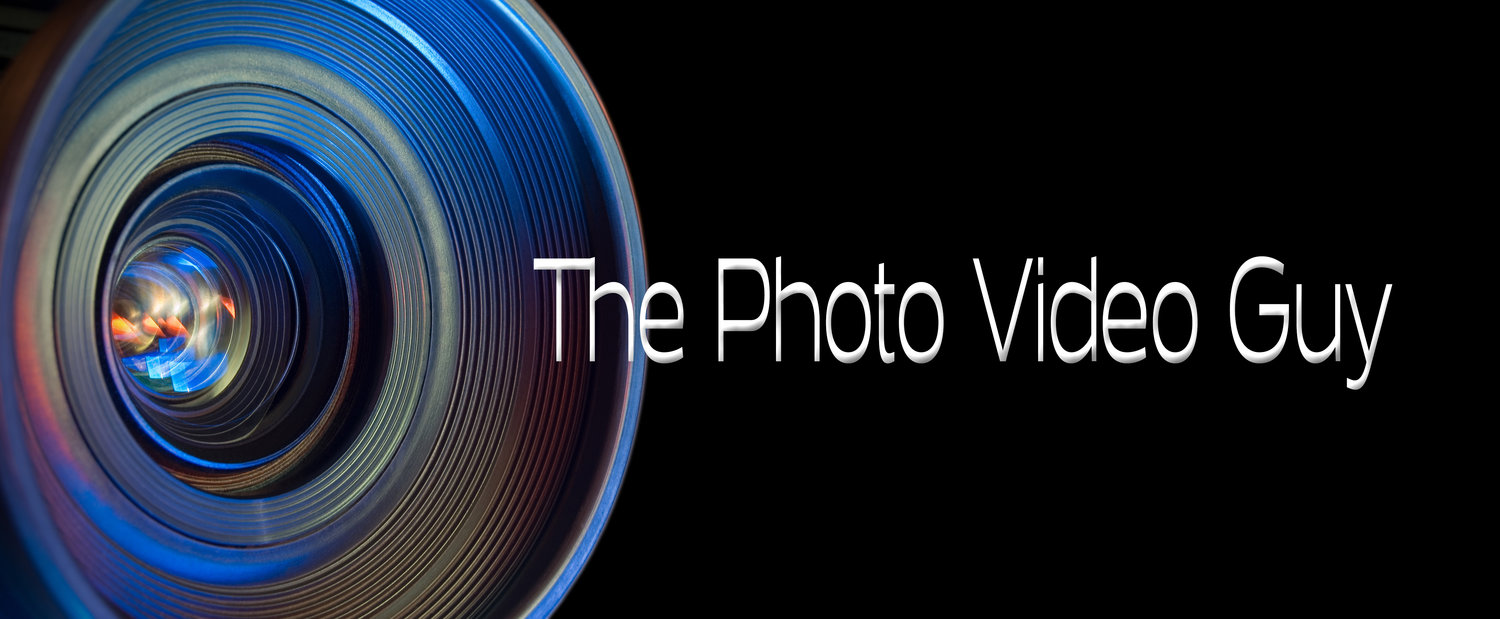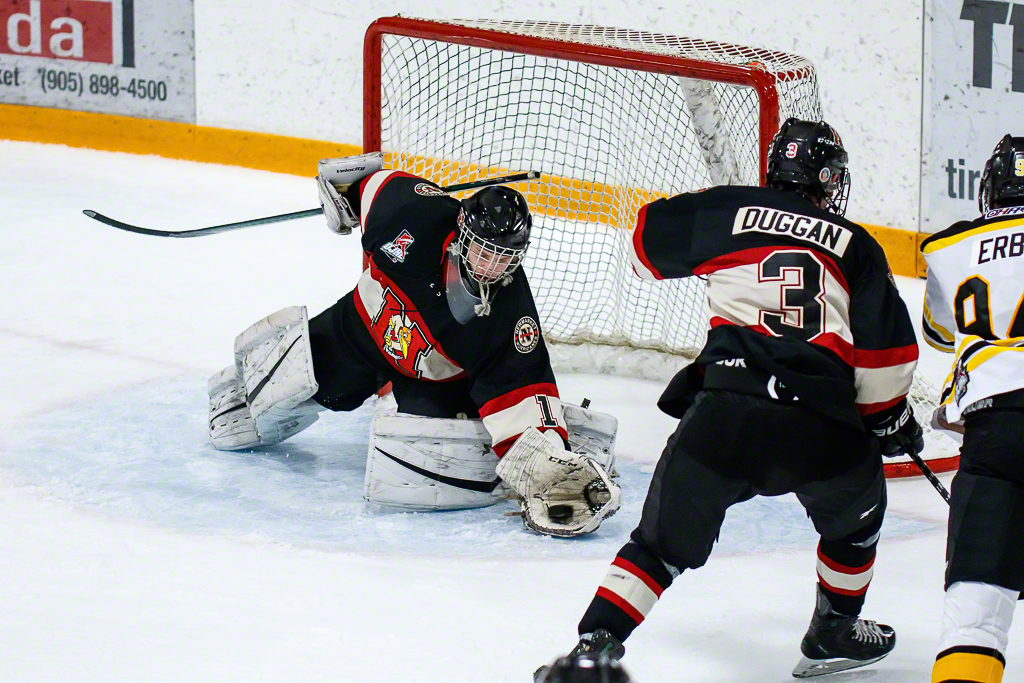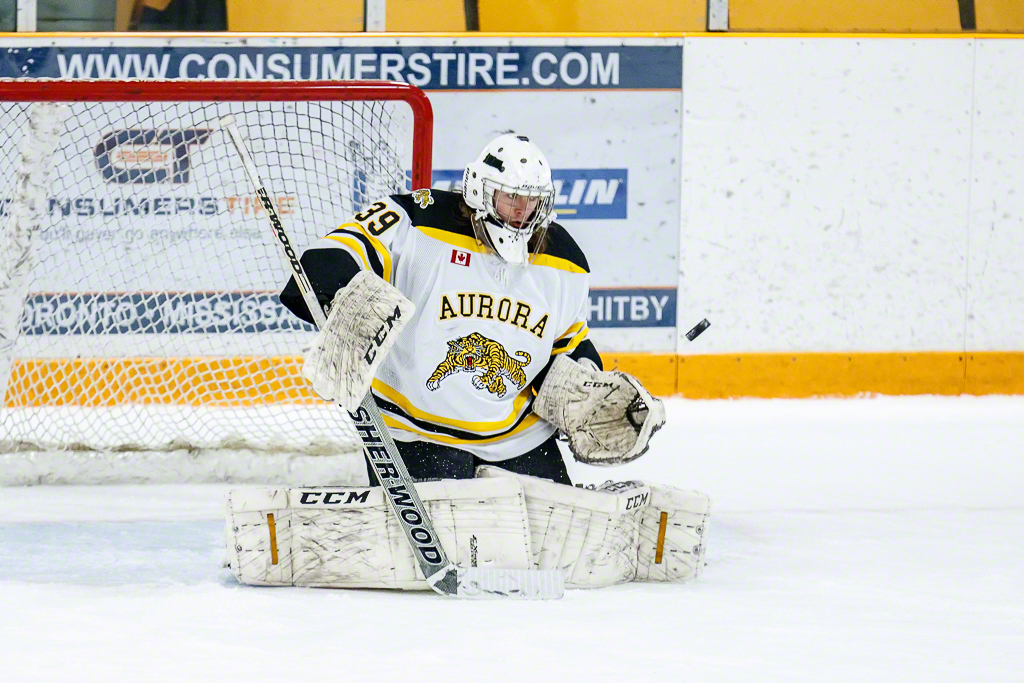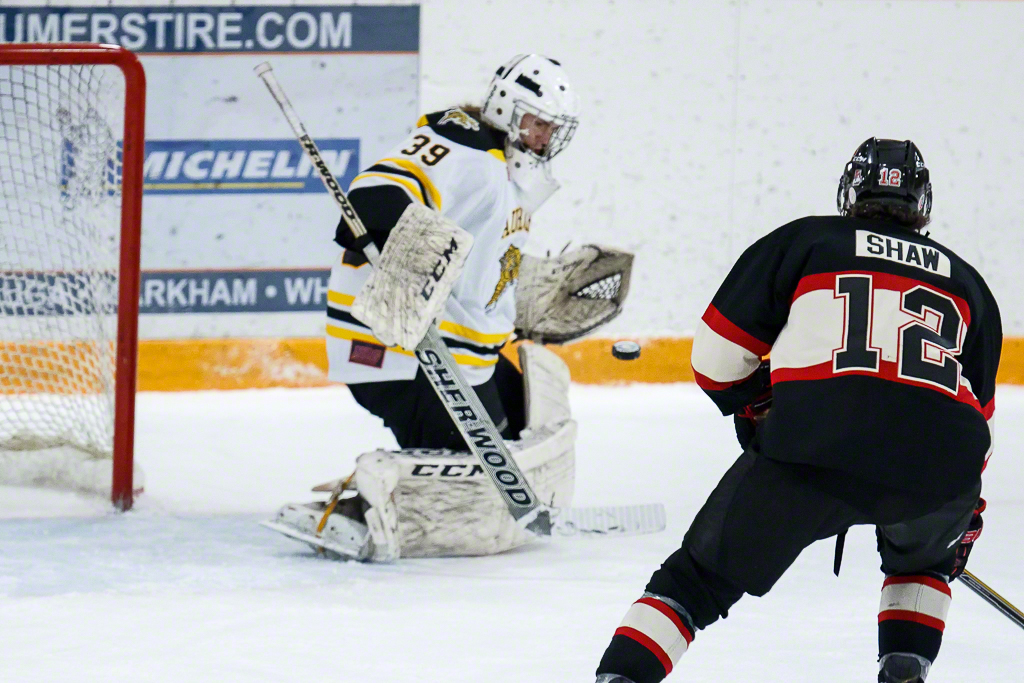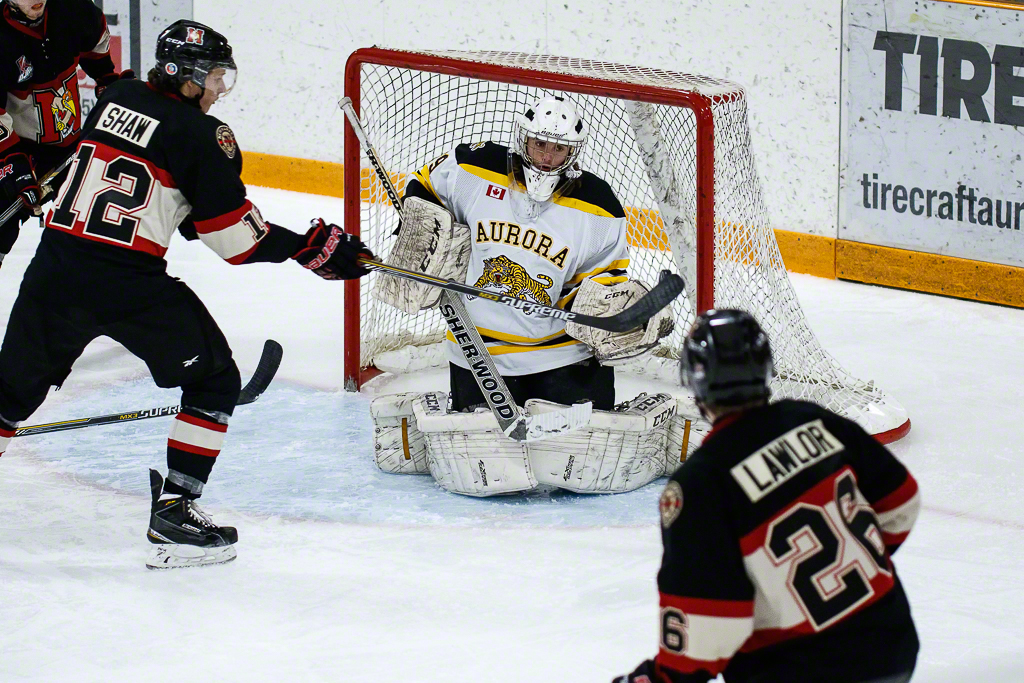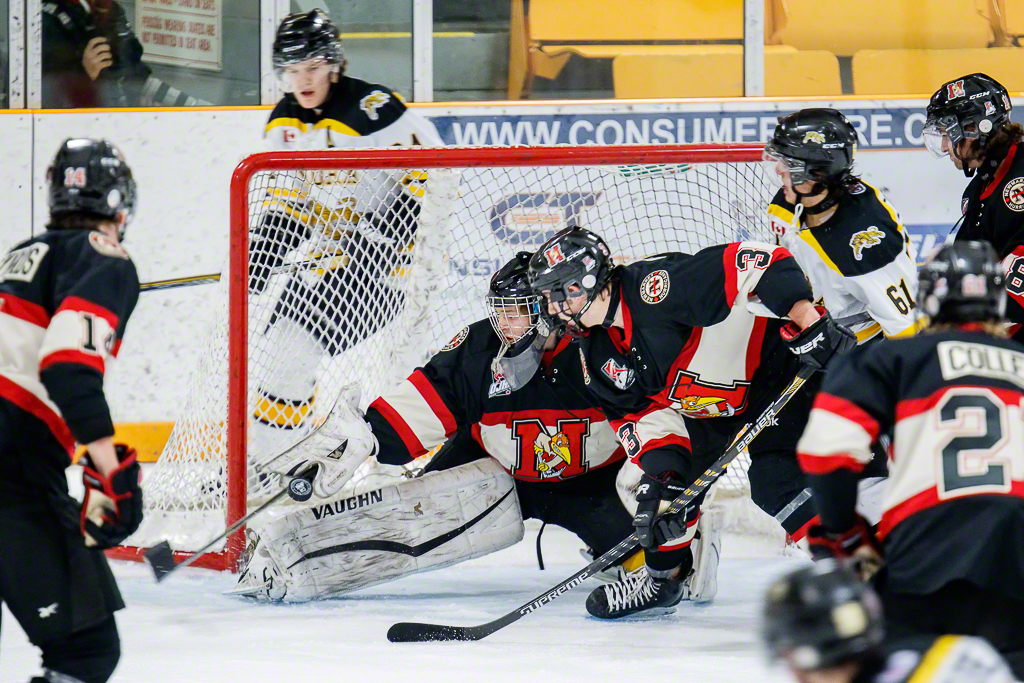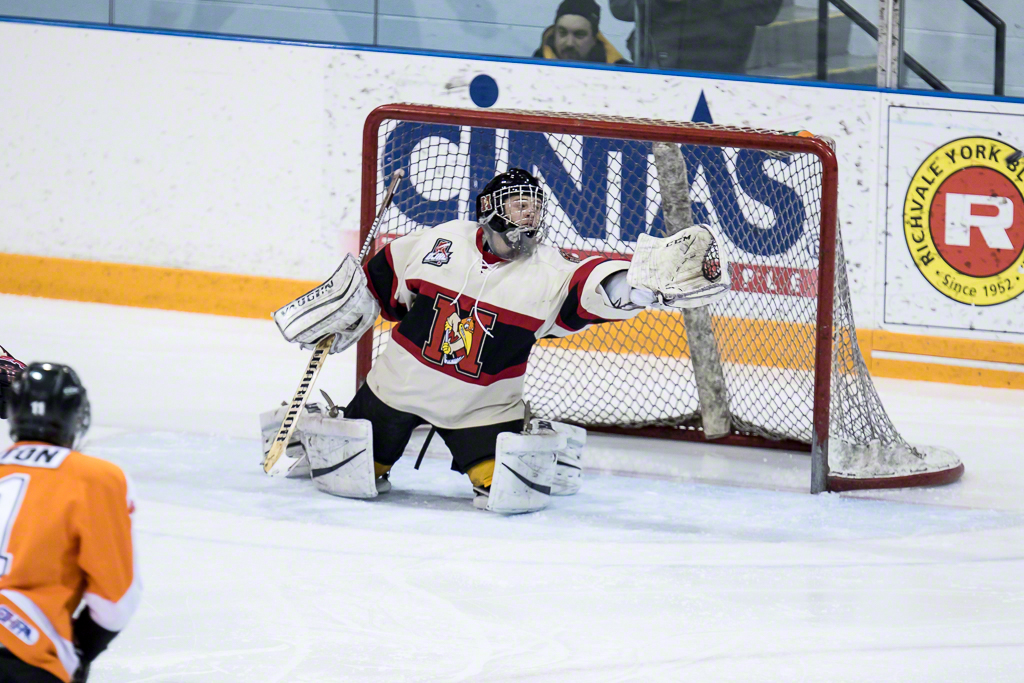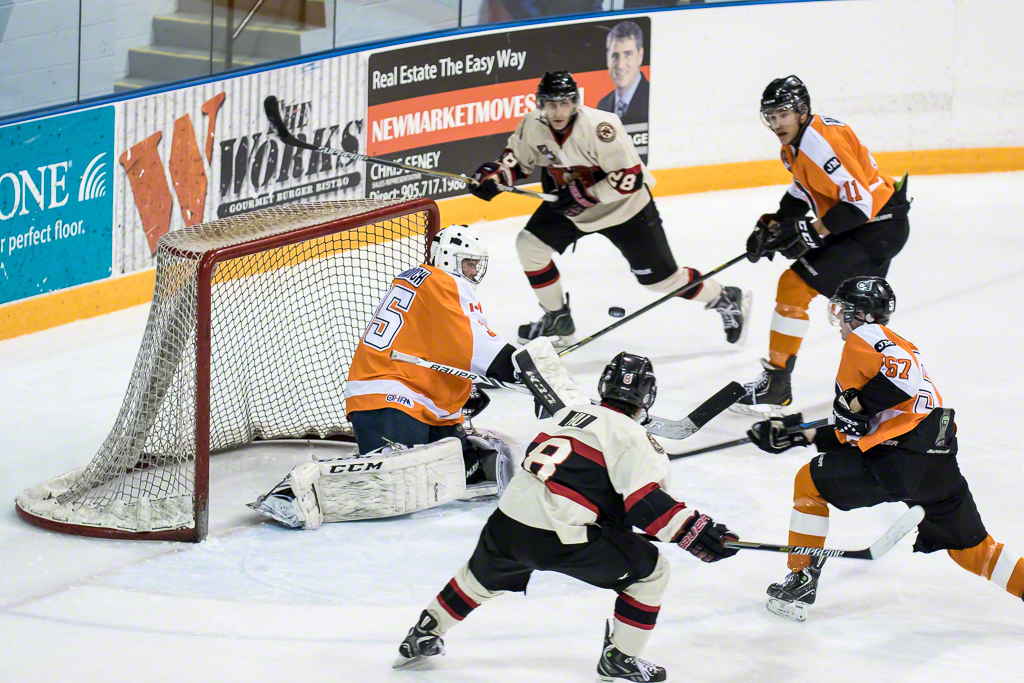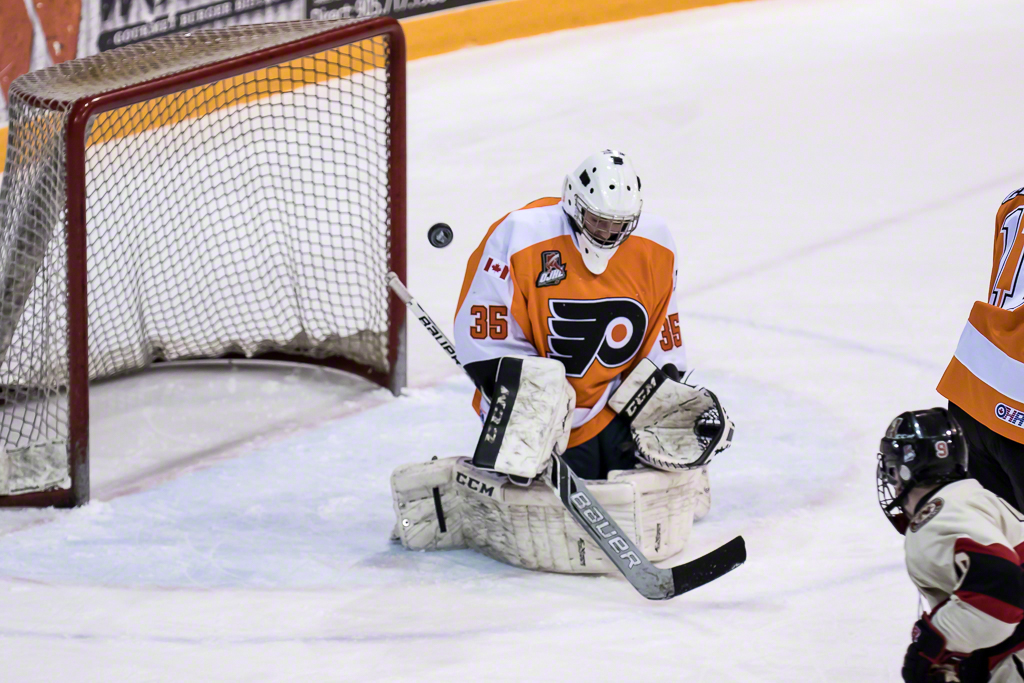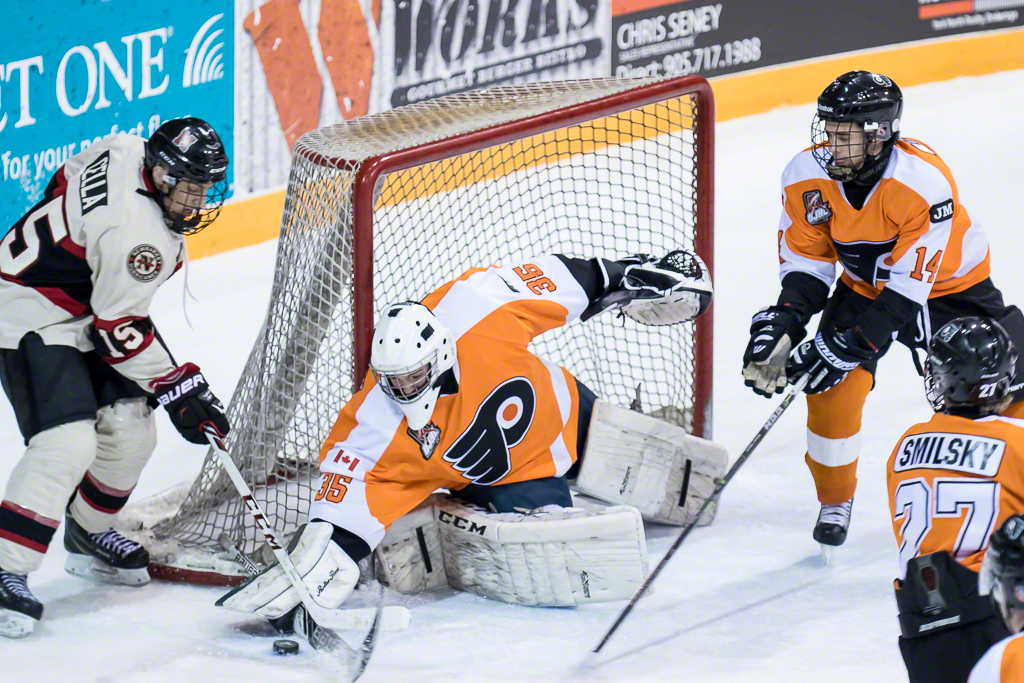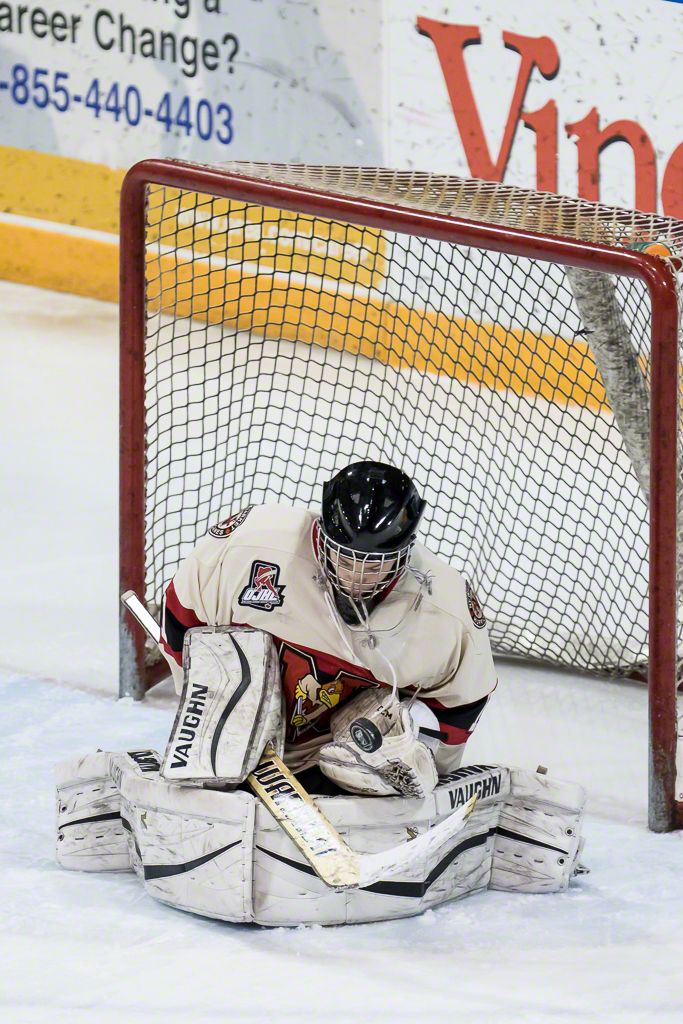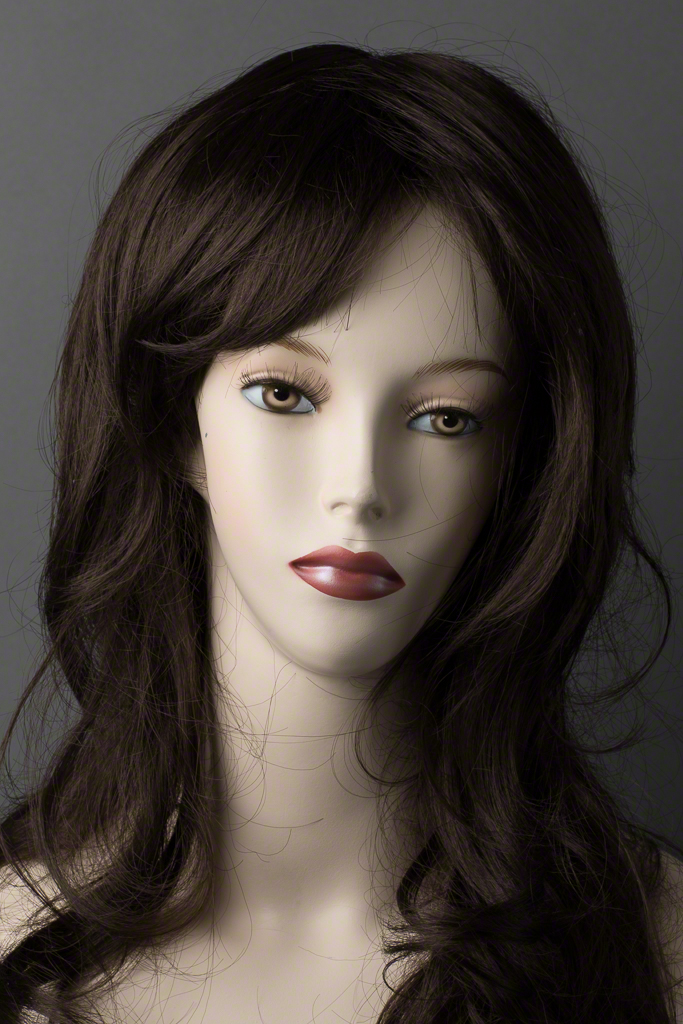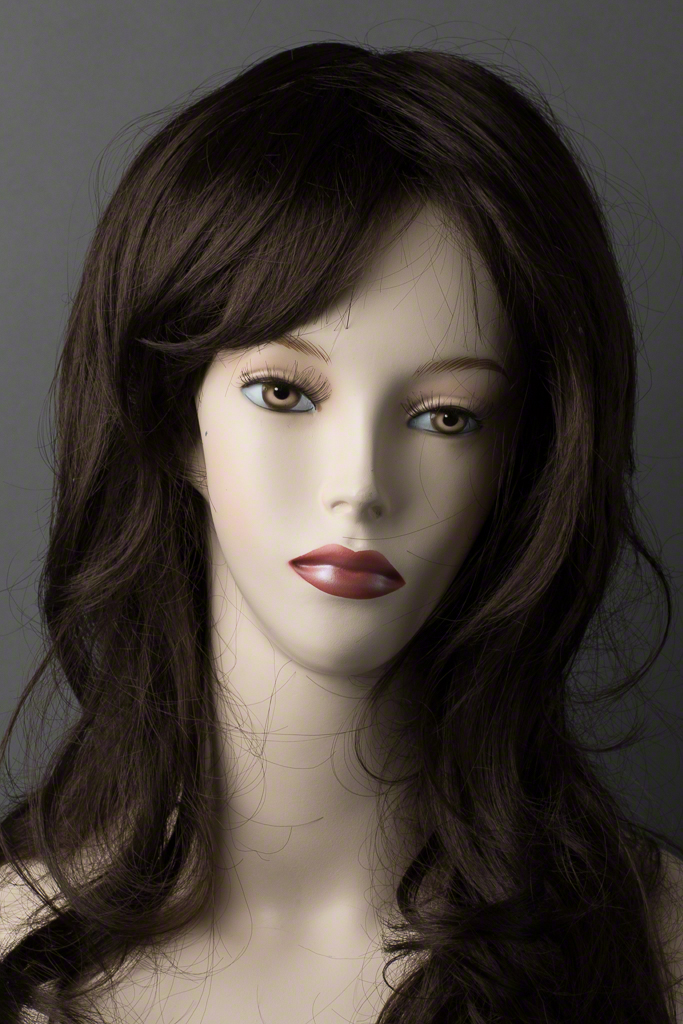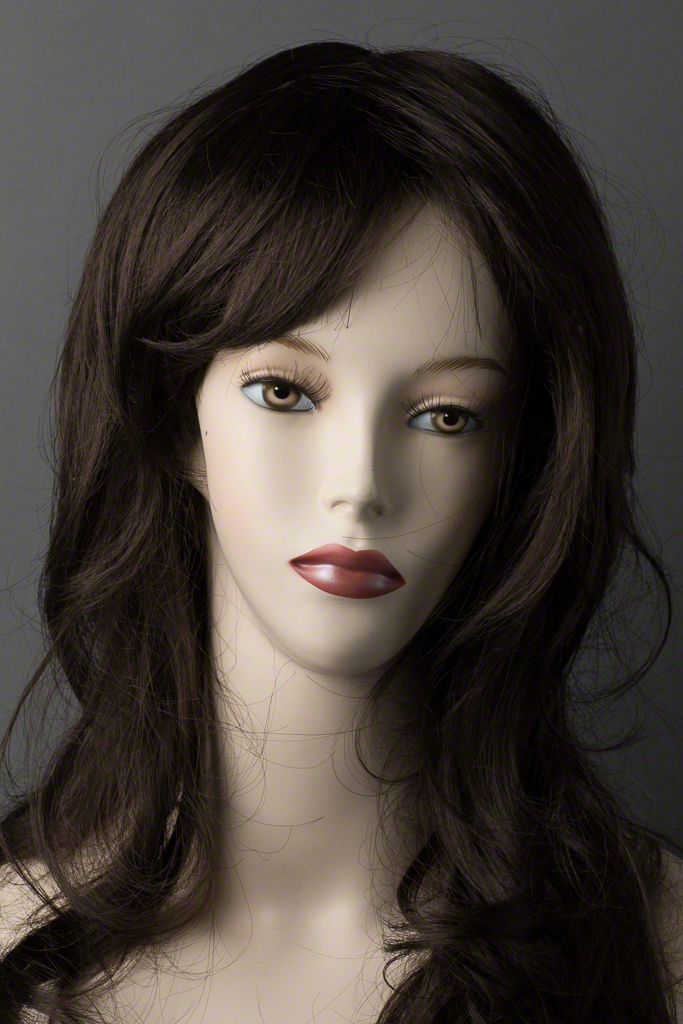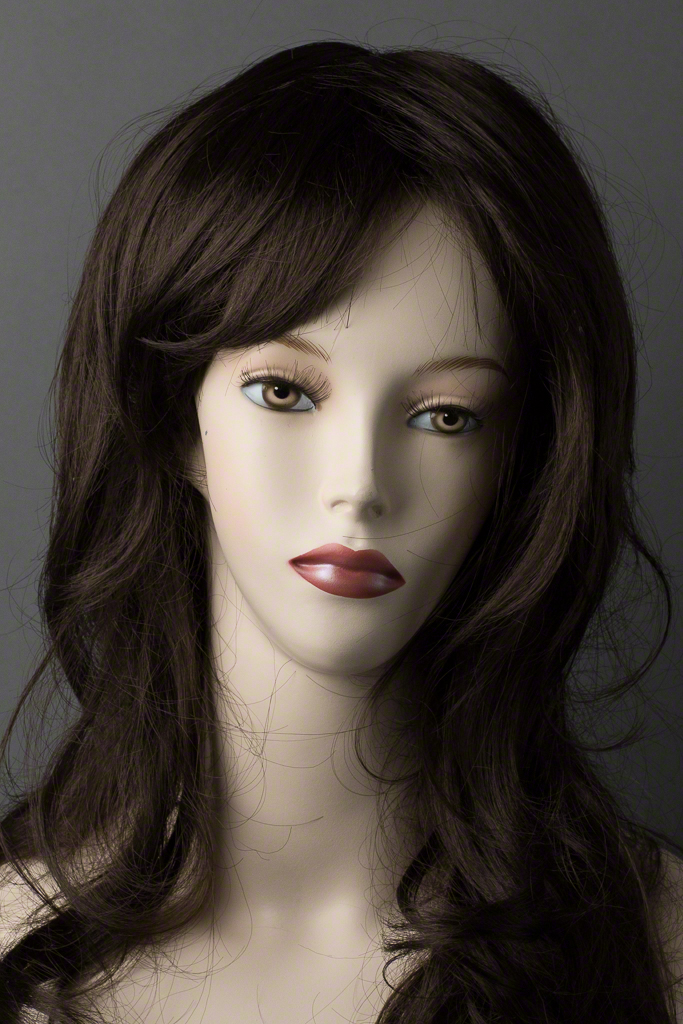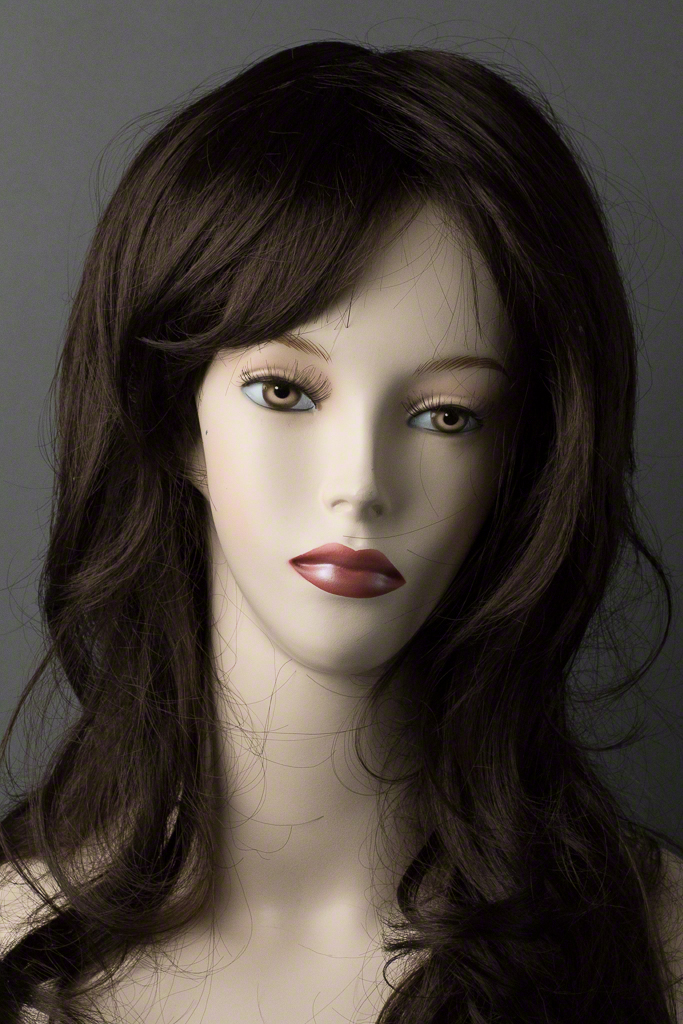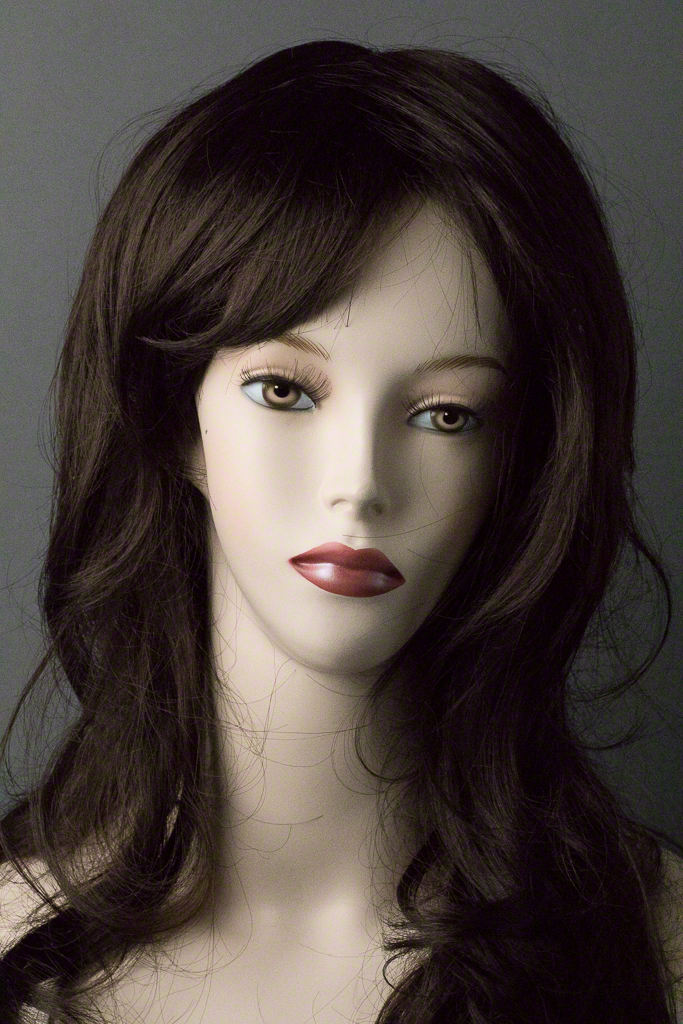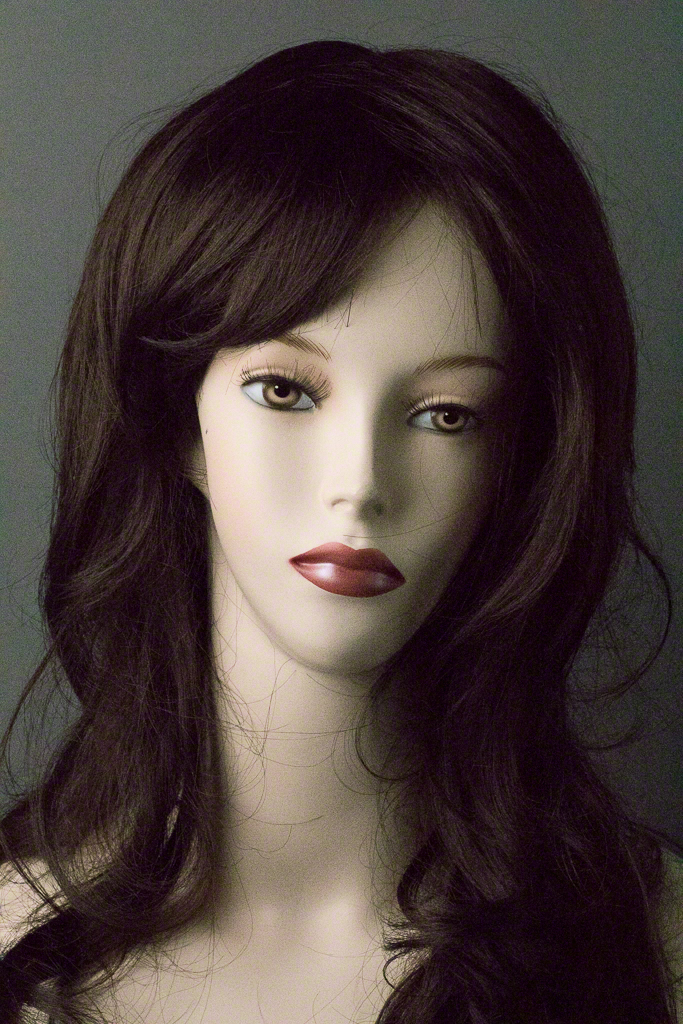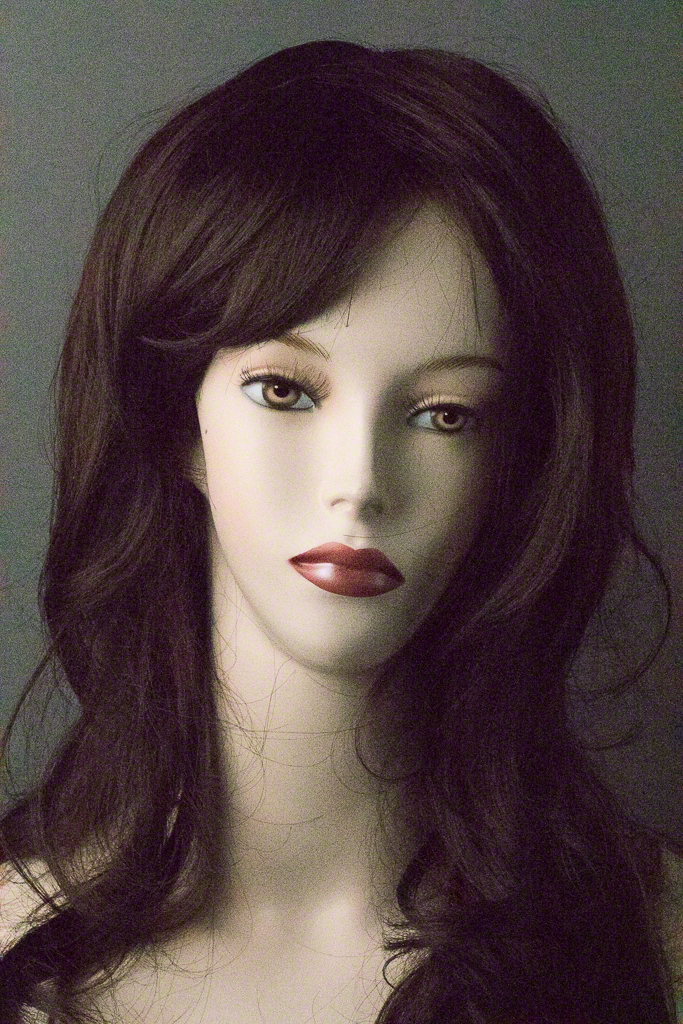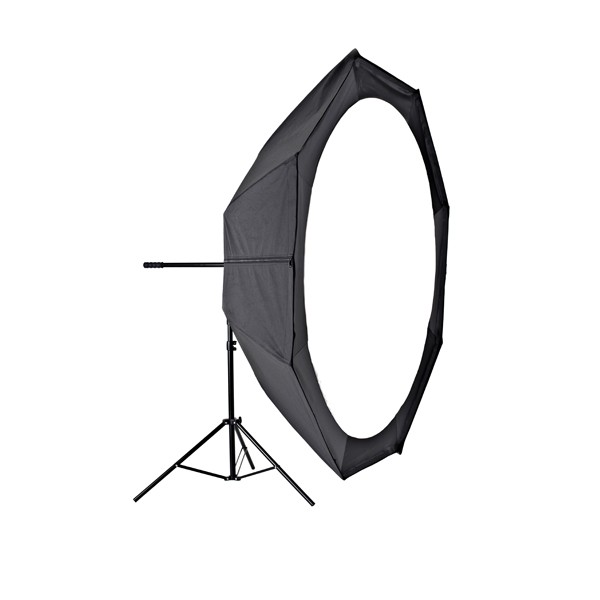Second full game test is now done and I am happier overall.
Here's the basic setup.
Canon 7D Mark II, Sigma 120-300/2.8 APO IS, ISO 2000, f:/2.8, Aperture Priority, Flicker Control Enabled, EV +1 ⅔, Stabilization enabled option2, all shots off a monopod. Focal length anywhere between 120mm and 300mm.
Different arena (Ray Twinney Centre in Newmarket) and different teams, Newmarket Hurricanes vs Orangeville Flyers. The two teams were very closely matched and the guys played hard all night making for a wonderful game.
Let's see what I learned this time;Autofocus
Set to Case 4, what I usually do for hockey, single centre point spot. Back button focus only, focus at shutter button disabled. I found the AF more responsive this time, partly because the lighting was brighter and more contrasty and partly because of disabling the shutter button driving focus as well as the back button. I still don't like using any more points than 1 for sports although I know the camera is quite capable.
Anti-Flicker
I said I planned to shoot this game with the flicker control disabled but my first two shots were giving me the flicker warning in the viewfinder and it impressed me that it could tell so I turned it on. Documentation says you may encounter degraded response in shutter release but I did not find this.
Going Longer
I shot the first game with the 70-200/2.8 L IS II and had to crop in too much. 300mm on the 7D is a bit long and I was certainly rolling the zoom a lot more with the big Sigma and its weight requires a monopod unless you are very strong and don;'t fatigue. That said, I am much happier and I was into the flow of the zoom by the second period. As this was my second game, I have beaten a lot of the rust off my technique for shooting hockey that showed up in the first game. Keep rate was much higher.
ISO Choice
I shot the first game at ISO 3200 and I found the contrast loss and noise to be on the edge, especially when cropping. I forced myself to shoot at a lower ISO for this entire game, in this case ISO 2000 and the noise is much better for the shift of only ⅔ of a stop. I had to crop less as well so the noise is less apparent. Next time I am going to raise it again for the light at the Twinney Centre to first period 2500, second period 3200 and third period higher still. Light with some contrastiness to it benefits the sensor for certain, but I need higher shutter speeds. I lost too many otherwise good shots due to motion blur and need higher shutter speeds to really get sharpness.
Burst Mode
I had changed the low speed burst from 3fps to 5fps and will bump it again to 6fps. Hi speed at 10fps is a waste for the speed of these games and 5fps is just on the edge of too slow for the fast action the teams displayed at the game.
Importing and Culling
I verified that my experience last week with corrupted downloads was the Lexar Professional USB 3.0 Dual Slot card reader. A different reader (Delkin) worked fine with the Sandisk Extreme 120mb/s cards I was using. I did an ingest with Photo Mechanic to enable the core image culling. Very fast, nice rendition, and very very quick from image to image. I also then imported to Lightroom 5.7 from the disk location that Photo Mechanic ingested to. It went quick enough but moving from image to image is still much slower and there is waiting for each RAW to render fully if you use Lightroom for culling. With over 700 images, the performance difference means time back in your life. I know that Photo Mechanic does a lot more than just speedy sorts and IPTC info updates, but I don't get the full benefit because I haven't spent enough time with it. Their support is excellent and LIVE people talk to you. If you have a need to import and cull large amounts of images, you should get the free trial for Photo Mechanic and give it a shot. I don't get any compensation from them so there is no incentive for me to recommend this beyond that it is great.
As mentioned, I imported the ingested and culled images to Lightroom as it is my primary library for images. It works fine and shows the 7D Mark II CR2 images without issue. I did a couple of other experiments as well.
RAW Conversion
I was a bit underwhelmed with the image quality from the first game and thought it might be related to the Adobe RAW Converter. Conversion is often reverse engineering because the camera manufacturers are not inclined to release their RAW formulas and folks like Adobe have to hack their way in to some extent. This week, DxO released an update to DXO Optics 10 that adds support for the 7D Mark II. They do their own RAW converter independently of Adobe and Apple. I tried all three. Truth to tell I cannot tell the difference from one to the other.
The Sensor
The review by DxOMark of the 7D Mark II got a lot of attention because it called out the new sensor as being a moderate improvement over the original 7D, competitive in its field and having too much noise at low ISO but competitive at higher ISO. The thing about these tests is that while they are very accurate and extremely scientific, I have to wonder how applicable they are in real life. I also know enough that the lens in use will have an impact. Nonetheless because my buddy Bryan asked me, I ran the database results for the 7D Mark II and compared it against other cameras and most of the time, the DxO scores rank it lower than the competitors. One thing I did notice is that the number of lenses tested is not documented for the 7D Mark II but many lenses are specifically listed for the others.
In my little world, what works for me is whether or not I am happy with the image quality. For my own work and with direct comparison, the 7D Mark II is an improvement over the original 7D, particularly in the area of higher ISO. I would say it is better by about 1.5 stops. It is no Prince of Darkness like the 1Dx, and not even as good as my aged but reliable 1D Mark IV. The challenge is the lack of consistent points of comparison. I selected the camera for the reach with long lenses, the frame rate for sports and the weight or lack thereof and expected (and delivered) superior low light performance over the 7D. Does the D7100 get a better rating? Yes it does, so does the D3300 and the Sony A77 beats them all.
My question to anyone who gets caught up in spec wars is whether you can see a difference. If you think you can, then let that drive your choices. DxO rates the 7D Mark II as equivalent to the long discontinued Nikon D300s, which was in its day a leader. Ok. I am happy, albeit not overjoyed, with the sensor performance in the 7D Mark II. But I will wait for a couple of firmware revisions as Canon is notorious for using firmware to throttle the performance of some of their products, with no customer logical reason for doing so. Time will tell.
Handling
I may have mentioned that I put the battery grip on my 7D Mark II. I am so used to having a place for my third and fourth fingers to grip, I find it hard to shoot a DSLR without a grip. I do need to get a proper RRS L-Plate for the 7D Mark II for tripod mounting but for the game I used the plate on the foot of the Sigma to attach to my RRS Monopod head. While the camera itself is well balanced, you can feel the strain created by long heavy glass so proper support is important.
There is a new rocker switch to allow you to rapidly shift between focus points. I will cut it some slack because a) it's new and b) I rarely if ever change focus points when handshooting but so far it's in the way.
After over 1.500 shots, I still don't like what Canon has done with the Info displays in playback mode. There is too much JPEG related crapola and I yearn for a cleaner interface.
Next Steps
I think that my hockey kit will be the 7D Mark II with the Sigma 120-300/2.8 They work well together and if I push the ISO a bit higher in the Twinney Centre and work on being able to crop tighter in camera, I am confident that things will go the way I want. Polo season is months away here in the Great White North, so my next test will be a complete changeup. I will be doing a side by side comparison of the 7D with Magic Lantern firmware against the 7D Mark II in a video recording session.
Here are the sample images from the Hurricanes - Flyers game
